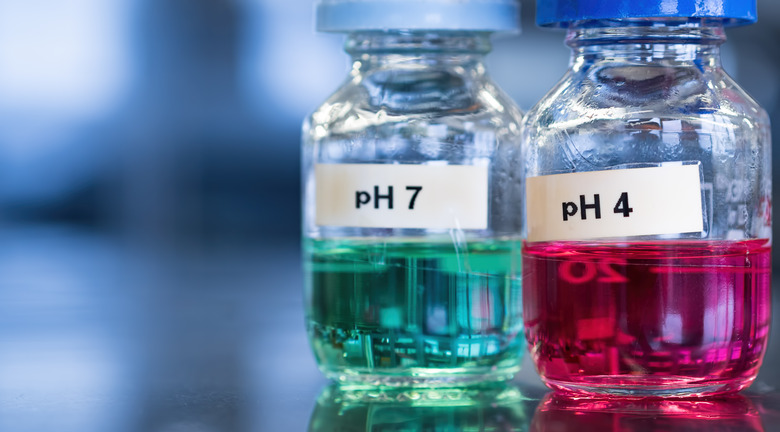How Can The Chemical Properties Of A Substance Be Determined?
The chemical properties of a substance can be determined by performing experiments that use specific materials or processes with known characteristics. If a material affects the substance in a given way, the substance has a particular property. If a process changes the substance, more properties can be deduced. The larger the number of experiments performed, the more properties can be determined. Eventually, the properties found by experiment can allow a clear identification of the substance together with all its known properties.
TL;DR (Too Long; Didn't Read)
Performing chemical experiments on a substance allows the determination of some of its properties and a subsequent identification of the substance. After the name of the substance is known, the rest of its chemical properties can be established.
Common Experiments
Common Experiments
A chemical reaction has to take place with or in a substance to determine the chemical properties of the substance. While physical properties can be determined by examining the look, smell and feel of a substance, chemical properties are hidden until an experiment shows what they are. Typical chemical properties that are easy to determine include flammability, reaction in air and reaction to water. In each case, it is important to note the condition of the substance accurately before the experiment, what was done in the experiment, and the result. Because some of the experiments may destroy the amount of substance used, they should only be carried out on samples of the substance.
Determining flammability can be as simple as holding a sample of the substance over a match. If it burns, it is flammable, leading to additional experiments to find more properties. Measuring the heat given off by the substance when it burns gives the heat of combustion. Measuring the temperature at which it bursts into flame gives the ignition temperature. Performing additional tests on the combustion products can yield more information on chemical properties.
To determine reactivity with other materials such as air and water, you expose the substance to them. If the substance is solid and has already been exposed to air, scratching or scraping the surface may expose a layer of substance that has not reacted with air. If the revealed material is different from the unscratched surface, a reaction has taken place. In the same way, exposing the substance to water and checking for changes determines the reactivity with water.
Experiments With Acids and Bases
Experiments With Acids and Bases
Acids such as sulfuric acid or bases such a sodium hydroxide react with substances in different ways. Depending on the reaction and its products, some of the chemical properties can be determined. These chemicals are corrosive, and reactions with them can release dangerous fumes. Any experiments should use tiny, drop-sized portions added to the chemicals or the substance, and the work should be carried out in a lab setting under a fume hood.
For example, a small amount of a gray powdered substance placed into a solution of sodium hydroxide might result in a reaction with bubbles. The collected bubbles, tested for flammability, might explode with a pop. In this case, the gas is probably hydrogen, and the gray powder could be aluminum or zinc. Further experiments could determine additional properties that would allow a definite identification of the substance.
Determining Specific Properties
Determining Specific Properties
Sometimes the reaction of a substance to specific conditions can determine whether it can be used for a particular application. For example, it might be important to know whether a substance can withstand prolonged exposure to a given concentration of hydrochloric acid. To test for this chemical property, immerse the substance in hydrochloric acid and subsequently examine it to see if there was a reaction. By carrying out these kinds of experiments on substances, you can determine whether they have specific properties. For all substances, chemical experiments are the key to determining their chemical properties.
Cite This Article
MLA
Markgraf, Bert. "How Can The Chemical Properties Of A Substance Be Determined?" sciencing.com, https://www.sciencing.com/how-can-the-chemical-properties-of-a-substance-be-determined-13710244/. 14 March 2018.
APA
Markgraf, Bert. (2018, March 14). How Can The Chemical Properties Of A Substance Be Determined?. sciencing.com. Retrieved from https://www.sciencing.com/how-can-the-chemical-properties-of-a-substance-be-determined-13710244/
Chicago
Markgraf, Bert. How Can The Chemical Properties Of A Substance Be Determined? last modified August 30, 2022. https://www.sciencing.com/how-can-the-chemical-properties-of-a-substance-be-determined-13710244/
